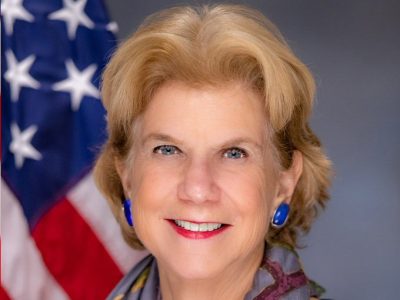Public Policy Organization Issues Report on State Foundation Aid
News Based on facts, either observed and verified directly by the reporter, or reported and verified from knowledgeable sources.

The Rockefeller Institute of Government outlined a series of recommendations last week to analyze and update New York’s Foundation Aid to provide more equitable funding for school districts.
The organization released its report on Dec. 3, making suggestions for state lawmakers to consider, including revisions on how to determine district poverty rates and changes in calculating the regional cost index, which has not been updated in 17 years. It also proposed a new method to determine which districts are “successful school districts,” because a limited number of school systems are deemed to reach that standard under the current formula.
In a note preceding the 314-page report, Rockefeller Institute President Robert Megna wrote that while the state Foundation Aid formula represented an improvement in helping to determine how schools are funded when it was introduced in New York 20 years ago, “several components have grown stale” and change is needed.
There are about 15 components to determining districts’ Foundation Aid funding.
“This document represents a menu of options for policymakers to consider now and in the years to come that address issues with the formula’s components while giving school administrators the reliability and predictability they need,” Megna wrote. “Where necessary, we recommend that policymakers phase in changes so no district sees large year-to-year changes in funding. Foundation Aid formula improvements can be made as part of a multiyear plan, one that comes with the necessary funding to implement those updates and reforms.”
Recommended changes come almost eight months after the state legislature charged the Rockefeller Institute to return with finding on how to improve the Foundation Aid formula on or about Dec. 1. The report’s contents were influenced by a series of five public hearings across the state earlier this year.
One key suggestion outlined in the report was to update the Successful School Districts model to use the top-performing 50 percent of districts on the state’s math and English Language Arts (ELA) exams for grades 3-8 based on average results over the most recent three years.
Another recommendation is using a five-year inflation rate for the Northeast Region, rather than going from year to year based on the entire U.S. The revision would more accurately reflect costs for New York districts, the report stated. For districts whose borders are within a single county – about 94 percent of the state’s roughly 700 school systems – they would use their county’s cost index.
Other suggestions include discontinuing free and reduced lunch as a standalone adjustment, replacing it with economically disadvantaged counts, which tracks students whose families are eligible for various public support programs, and adjusting how English Language Learners (ELL) are determined by the number of instructional service hours that are provided to ELL students.
A proposal in the report recommends that districts be allowed to hold a fund balance of up to 10 percent of their annual budget rather than the current 4 percent to limit fiscal uncertainty.
State Sen. Shelley Mayer (D-Yonkers), the chair of the Senate’s Education Committee, said she is encouraged by the report, particularly the recommended elimination of using free and reduced lunch, to make the formula more equitable going forward and adjustments regarding the Regional Cost Index.
Mayer said in the coming weeks and months the legislature will be running various financial models in hopes of measuring the impacts of the recommendations on districts across the state.
“The Rockefeller Institute’s report offers a set of recommendations – some good, some concerning – to begin a robust conversation about how to fix the Foundation Aid formula,” Mayer said. “I want to be clear that any determinations about how to change the formula will rest with the legislature and governor. Further, we are not limited by what is proposed in the Rockefeller Institute’s report. I am carefully reviewing their recommendations in full and look forward to working with my colleagues in 2025 to ensure the formula truly meets the needs of our school districts and communities.”
The most concerning recommendation for Mayer is a proposed five-year phase-out of the Save Harmless provision for certain high-needs districts, a major point of contention when Gov. Hochul last January proposed cutting Foundation Aid for some districts. Save Harmless guarantees all districts will not receive less Foundation Aid than the year before.
Mayer called that suggestion “a non-starter.”
“That is not an acceptable starting place for me either, and I don’t think you can offer schools less than the year before,” she said.
New York State United Teachers (NYSUT) had a similar action, applauding some of the suggestions while being wary of others. In a statement, the union mentioned that the report “provides an important analytical framework for addressing” inequities.
“For too long, outdated models and inequitable funding formulas have left many students — especially those in high-need districts — without the resources they need to thrive,” the NYSUT statement read. “The Rockefeller Institute’s report provides an important analytical framework for addressing these inequities and ensuring every public school student has access to the high-quality education they deserve.”
Mayer said depending on how discussions proceed in the new session, some recommendations could be incorporated in the coming year.

Martin has more than 30 years experience covering local news in Westchester and Putnam counties, including a frequent focus on zoning and planning issues. He has been editor-in-chief of The Examiner since its inception in 2007. Read more from Martin’s editor-author bio here. Read Martin’s archived work here: https://www.theexaminernews.com/author/martin-wilbur2007/
